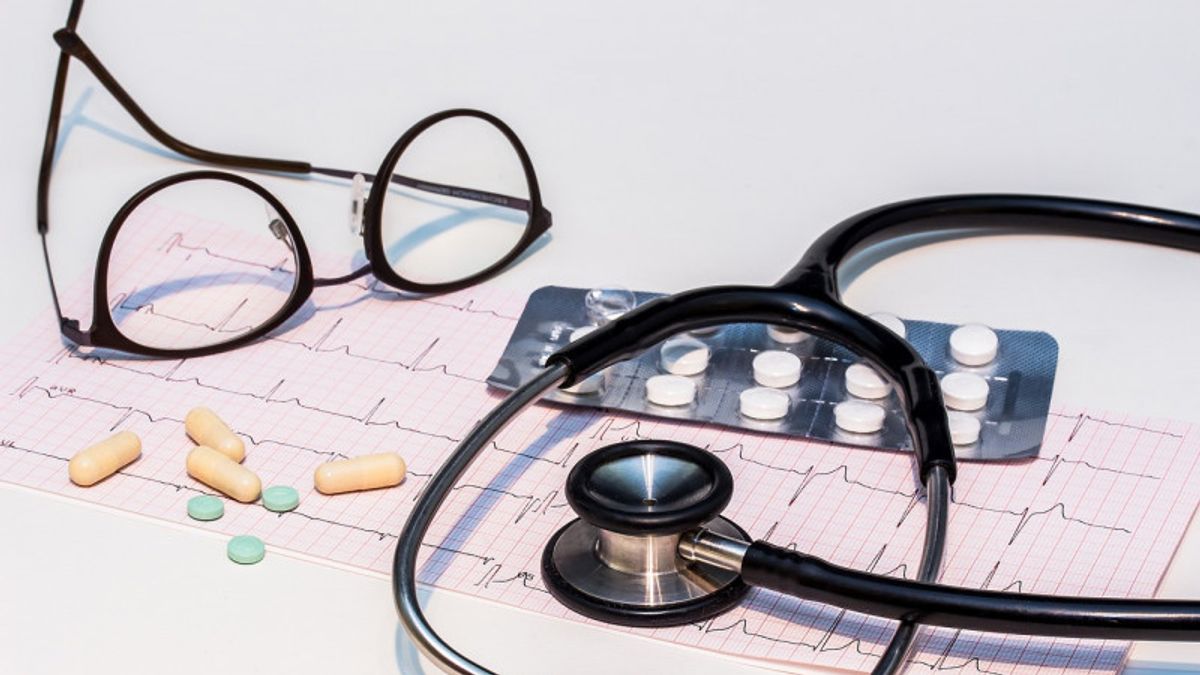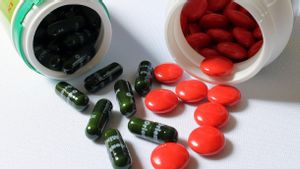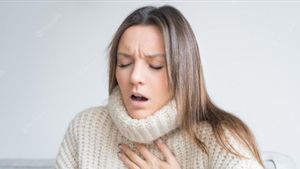JAKARTA - Among several problems that can attack the heart, one of which is a rhythm disorder or arrhythmia, namely atrial fibrillation as a cause of stroke.
According to a heart and blood vessel specialist from the University of Indonesia Hospital (RSUI), Dr. Sony Hilal Wicaksono, Sp.JP(K)-FIHA, FAsCC This condition occurs when the upper and lower heart chambers do not coordinate well, causing the heart to beat too slowly, too fast, or even irregularly.
"The heart rhythm can be irregular and can also be regular (too fast or too slow). A heart rhythm is said to be normal if it beats regularly at a rate of 40-110 beats per minute," he said in a written statement quoted by Antara.
Those with heart rhythm disturbances usually experience a number of symptoms such as palpitations, shortness of breath, weakness, dizziness, and even fainting.
Self-examination of the pulse using a finger is a doctor's recommendation to avoid atrial fibrillation. But not everyone is trained to do this, so they are advised to come to the hospital for a 12-lead ECG check-up.
Sony says basic life support skills are needed if people around you are experiencing these symptoms.
Some of these steps can be abbreviated as "DRSABCD", which is an acronym for Danger or first check the dangers around, Response or check the response of people who have fainted, Send for help, one of which is contacting an ambulance, Airway, namely freeing the airway, Breathing or breathing checking, CPR if there is no movement of breath and Defibrillation installed as soon as possible if available while waiting for the ambulance to arrive.
Heart rhythm disorders and stroke
A neurologist at the University of Indonesia Hospital (RSUI), Dr. Rakhmad Hidayat, Sp.S(K), MARS said that the causes of heart rhythm disorders include genetic factors, abnormal heart electrical signals, and changes in normal heart tissue.
According to him, the incidence of ischemic stroke in arrhythmic patients is five times higher. The relationship between arrhythmias and strokes begins with impaired heart contractions, thereby blocking blood flow.
The blocked blood flow will form a clot (thromboembolism), which can be carried to the brain, blocking blood vessels in the brain which eventually causes a stroke.
The stroke itself can also trigger arrhythmias. Rakhmad then said, damage to brain tissue affects the autonomic nervous system in the body that regulates the rhythm and rate of the heart. Brain cell death can also stimulate the body's general inflammatory response that triggers arrhythmias.
"Arrhythmias are found more in strokes involving the right side of the brain and the insula area of the brain," said Rakhmad Hidayat.
There are a number of ways to help arrhythmia patients avoid stroke, including adopting a healthy lifestyle such as not smoking, avoiding consumption of alcoholic beverages, fatty foods, and high sodium content.
They are also advised to do regular exercise, control blood pressure and blood sugar, maintain ideal body weight, and regularly take medications prescribed by a doctor.
Some medications that may be prescribed may include those to improve heart rhythm and rate such as heart rate medications, heart rhythm medications (digoxin), or medications that prevent blood clots such as blood-thinning medications (aspirin or warfarin).
BACA JUGA:
The importance of monitoring
The heart and blood vessel specialist at RSUI, dr. Hermawan, Sp.JP(K)-FIHA said, patients with a history of cardiovascular disease, especially ischemic stroke (thrombo-embolic stroke) need continuous heart rhythm monitoring.
However, these rhythms are often not detected by instantaneous examination or even with existing modalities due to limited recording time, high cost, and invasive procedures.
Therefore, remote health monitoring or telehealth monitoring using handheld devices based on the Internet of Things (IoT) is said to be an alternative against this limitation.
"Maybe it can be an indefinite long-term alternative in detecting heart rhythm disorders such as atrial fibrillation which has been known to increase the risk of ischemic stroke up to four times," said Hermawan.
Not only that, the use of telehealth monitoring can also be applied to athletes with heavy physical exercise. These conditions are associated with the risk of a heart attack and sudden and dangerous heart rhythm disturbances that can cause death.
According to Hermawan, in the era of the COVID-19 pandemic and current technological advances, telemedicine has become a necessity. This facility increases the accuracy and speed of the diagnosis and consultation process of medical and other health facilities in areas where there is a shortage of health workers with special qualifications.
However, he stressed that the facility is not aimed at replacing existing clinical practices, but rather to help patients make early detection, increase alertness, monitor health and treatment independently, and assist doctors in making the best clinical decisions for further action.
"Telemedicine and telehealth monitoring should not be the sole modality that is relied on in making important clinical decisions," said Hermawan.
The English, Chinese, Japanese, Arabic, and French versions are automatically generated by the AI. So there may still be inaccuracies in translating, please always see Indonesian as our main language. (system supported by DigitalSiber.id)













